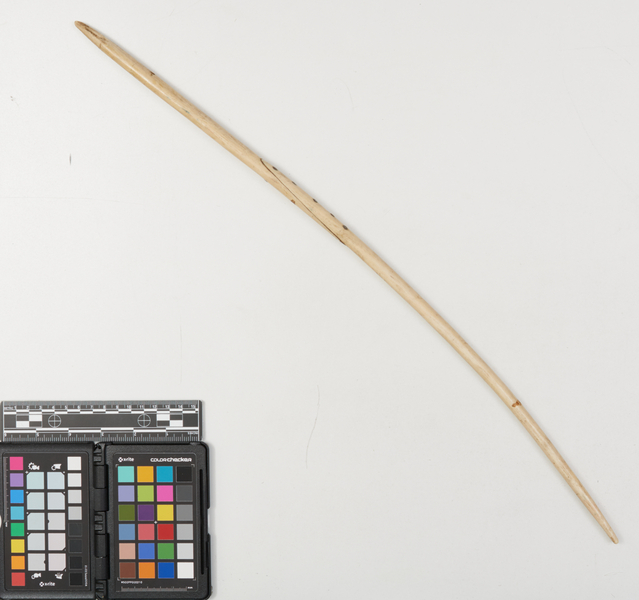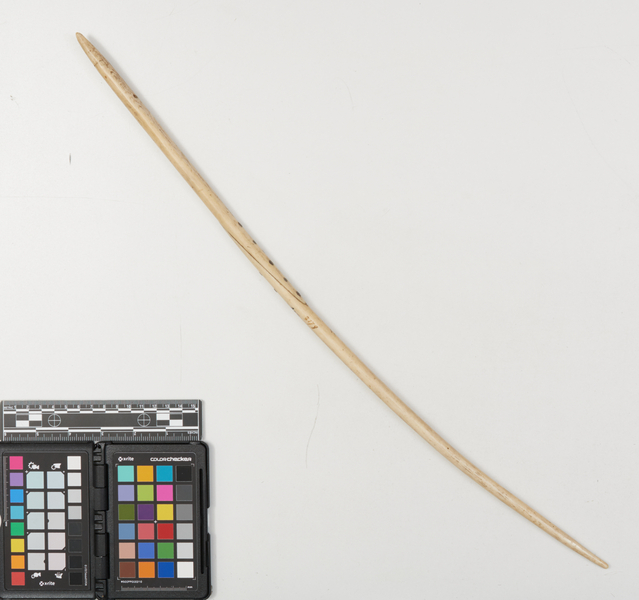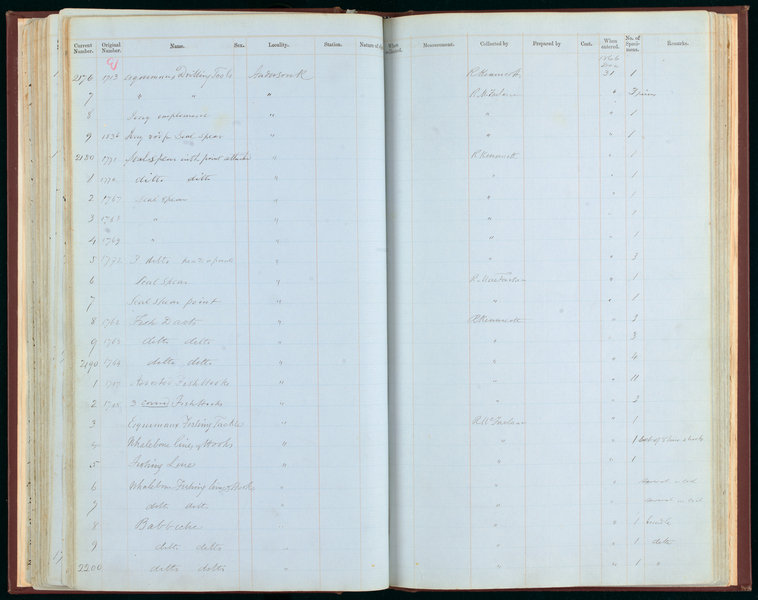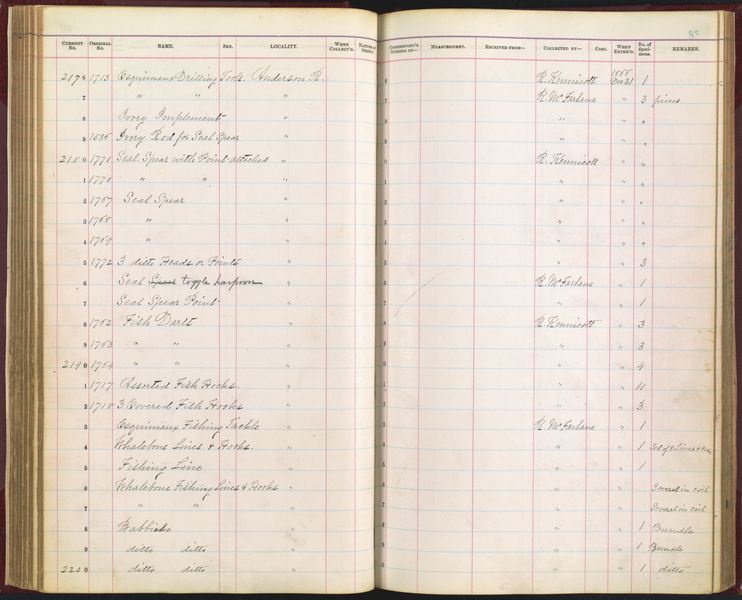Seal Harpoon Foreshaft Item Number: E2179-0 from the National Museum of Natural History





Notes
Source of the information below: Inuvialuit Pitqusiit Inuuniarutait: Inuvialuit Living History, The MacFarlane Collection website, by the Inuvialuit Cultural Resource Centre (ICRC), Inuvik, N.W.T., Canada (website credits here http://www.inuvialuitlivinghistory.ca/posts/12 ), entry on this artifact http://www.inuvialuitlivinghistory.ca/items/132 , retrieved 12-31-2019: Foreshaft for a harpoon made from two pieces of ivory joined at an obliquely cut splice by five rivets. One of the rivets may be copper, and the others are iron. The narrowest end of the foreshaft, which would have been inserted into a socket at the base of a harpoon head, is cut straight across. The other end is rounded, which would have allowed it to swivel when inserted into a harpoon socket piece. This type of foreshaft is normally used for hunting seals at breathing holes. More information here: http://www.inuvialuitlivinghistory.ca/item_types/30: Harpoons are used for hunting sea mammals such as seals and whales. They have a point, or 'head', that separates from the rest of the harpoon and remains attached to the quarry. A line running from the harpoon head is held by the hunter or attached to a float, allowing the animal or fish to be retrieved. Thrusting harpoons, used for hunting seals at breathing holes on the sea ice, generally have long foreshafts that swivel inside a socket piece attached to the harpoon shaft in order to release the harpoon head. Throwing harpoons used for hunting seals and whales in open water normally have foreshafts that are more securely fixed to the harpoon shaft. Both types are found in the MacFarlane Collection.
Item History
- Made in Northwest Territories, Canada
- Collected in Northwest Territories, Canada
- Received from Roderick R. MacFarlane on December 21, 1866
What
- Name
- Seal Harpoon Foreshaft
- Identification Number
- E2179-0
- Type of Item
- harpoon
Who
- Culture
- Eskimo, Inuit and Inuvialuk
- Received from
- Roderick R. MacFarlane
Where
- Holding Institution
- National Museum of Natural History
- Made in
- Northwest Territories, Canada
- Collected in
- Northwest Territories, Canada
When
- Acquisition Date
- on December 21, 1866
Other
- Accession Number
- 66A00090